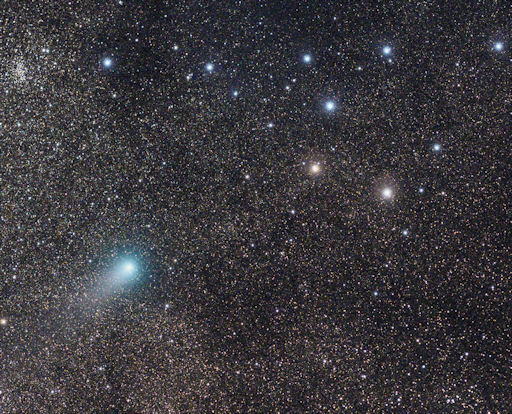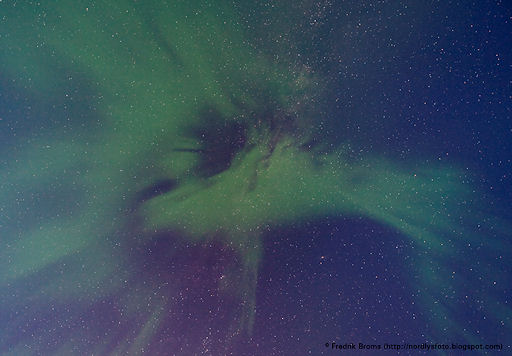Metallic photos of the sun by renowned photographer Greg Piepol bring together the best of art and science. Buy one or a whole set. They make a stellar gift. | | |
VISIT TO PLUTO: Dwarf planet Pluto is a world of mystery waiting to be visited for the first time. NASA's New Horizons probe is racing across the solar system for a close encounter that could dramatically alter what researchers "know" about Pluto and other small worlds. [story] [video]
A COMET AMONG THE STARS: As September begins, green Comet Garradd (C/2009 P1) is gliding across the star fields of the Milky Way. Tonight it will pass by Brocchi's Cluster, also known as "the Coathanger." Italian astronomer Rolando Ligustri photographed the approach on Sept. 2nd using a remotely-controlled 20" telescope in New Mexico:

"Comets are such beautiful objects," says Ligustri. "With the Milky Way as a backdrop, there seems to be a nice photo-op for Comet Garradd every night."
For now Comet Garradd is a telescopic object. It is, however, approaching the sun and brightening. Recent projections place it at peak magnitude 6, on the threshold of naked-eye visibility, in February 2012. Because Comet Garradd is a first-time visitor to the inner solar system, it could behave in unexpected ways, perhaps exceeding those expectations. Stay tuned--and meanwhile browse the image links below.
more images: from John Chumack of Yellow Springs, Ohio; from Kosma Coronaios of Louis Trichardt, Limpopo Province, South Africa; from Günther Strauch of Borken, NRW, Germany; from Parks Squyres of SaddleBrooke, Arizona; from Chris Schur of Payson, Arizona; from Tamas Abraham of Zsambek, Hungary; from Efrain Morales Rivera of Aguadilla, Puerto Rico;
finder charts: from Sky and Telescope, from Seiichi Yoshida
DEEP-SKY AURORAS: "Last night I was watching Comet Garradd when faint auroras appeared over most of the sky," reports Fredrik Broms of Kvaløya, Norway. "They didn't look very impressive visually, but a few seconds exposure revealed a stunning sight." Here is what his Nikon saw:

This is a fine example of "deep-sky auroras," a display nearly (or completely) invisible to the human eye, but easy pickings for a modern digital camera. Deep-sky auroras appear most often at high latitudes when geomagnetic activity is nominally low. All it takes is a point and cli-(count to three)-ck to record the wonders above.
And for the record, notes Broms, Comet Gerradd is now visible through 10x42 binoculars as it closes in on the Coathanger asterism. The auroras did not hinder its visibility.
August 2011 Aurora Gallery
[previous Augusts: 2010, 2009, 2008, 2007, 2006, 2005, 2004, 2003, 2002]

